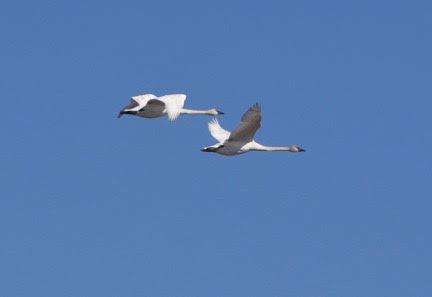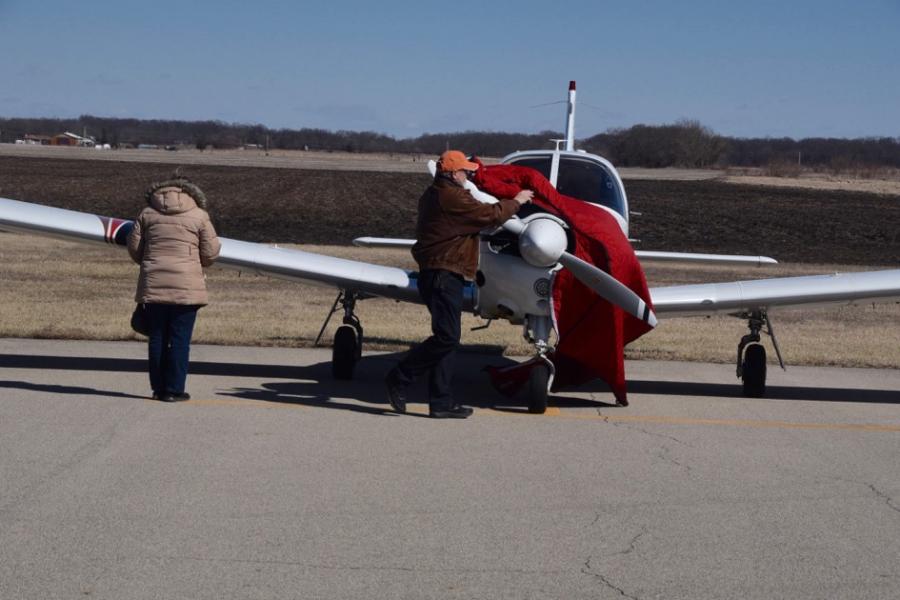THIRD ANNUAL MIGRATORY BIRD FLY-IN
This year’s Migratory Bird Fly-In on March 16 was a success. With Spring just around the corner, the birds were restless as they fueled up for their night flights north.
Nine airplanes and 20 people flew in to Havana’s beautiful 2,000-ft grass strip, from Iowa, Indiana, Wisconsin and Illinois. At the Emiquon Refuge we were treated to the sight of eagles, trumpeter swans, American pelicans, ducks, coots, rafts of canvas back ducks, and flocks of snow geese numbering 35,000 or more.
One encounter was up close and personal. A Bald Eagle seemingly dove at a car that slowed as the bird’s talons opened and then snapped shut on a furry morsel by the side of the road. One wing beat, and he was gone. The driver could not believe what he just witnessed.
Our group was guided by Aaron Yetter, wildlife biologist from the Stephen A. Forbes Biological Station, the oldest inland research station in the U.S. Aaron did a superb job explaining the ecosystem and the migratory patterns of each species. He explained that Bald Eagles were abundant because the Emiquon is like a big “fast food” stop for them. Most impressive were the Trumpeter Swans. Like a chorus of kazoos, they swept by and landed in formation. They are impressive animals measuring five feet from beak to tail, with a wing span of up to nine feet and weighing nearly 40 lbs. They are a national treasure having rebounded from 60 breeding pairs in 1930 to over 12,000 today.
We were joined by Dr. Duane Esarey, one of the foremost authorities on the ancient Mississippian culture that inhabited Midwestern river valleys. Dr. Esarey transported us back in time to the end of the last glaciation 12,000 years ago. He brought the hills and woodlands alive with a description of villages, farms, homes, hunting, fishing and trade that took place. Six thousand years ago, there were more people in the area than there are now.
During lunch spectators commented on the staggering numbers of animals we saw, their epic migratory flights and how fortunate we were to gain an understanding of the Emiquon and Chautauqua Refuges. Many will be back for future events at the best kept secret in Illinois, Havana Regional (9I0).
I wish to thank volunteers Bob Martin, John Komnick and Mike Perkins.
— Mike Purpura, RAF Illinois Liaison
Submitted on March 25, 2019


